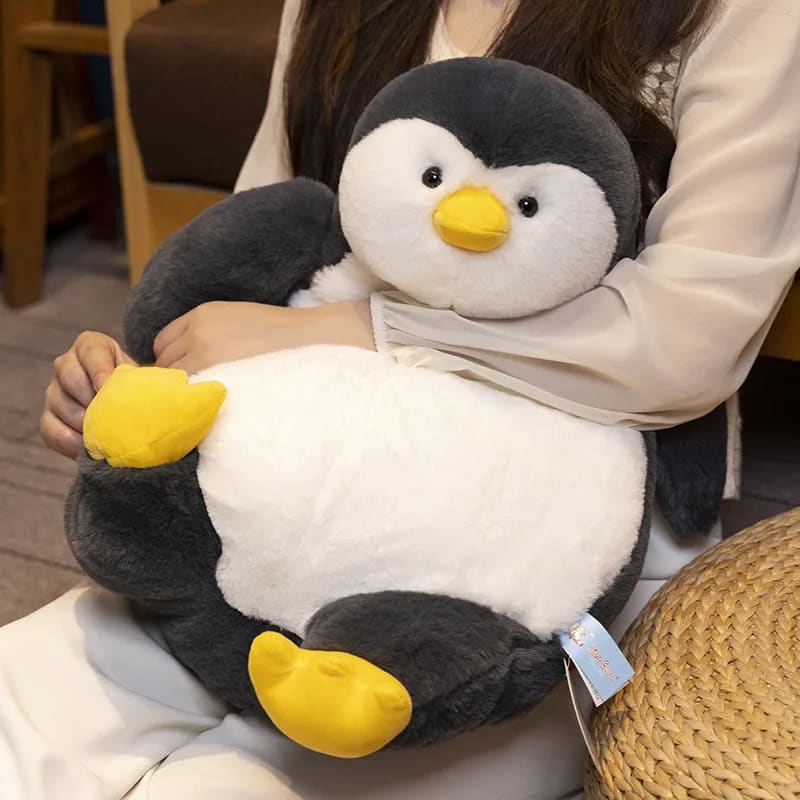Can Penguins Survive Being Frozen? Exploring the Amazing Cold-Weather Adaptations of Penguins
When we think of penguins, we often envision them gracefully swimming in icy waters and waddling on frozen shorelines. But can these adorable creatures actually survive being frozen? Let's dive into the extraordinary world of penguins and discover their remarkable cold-weather adaptations that allow them to thrive in extreme conditions.
The Insulating Power of Feathers
Penguins have a unique feather structure that helps them withstand freezing temperatures. Their feathers are densely packed, providing a thick layer of insulation to keep them warm. These feathers are coated with a waterproof substance, preventing water from seeping in and making them wet.
The feather's structure also traps air close to the penguin's body, creating an additional layer of insulation. This air layer acts as a buffer zone, helping penguins maintain their body temperature even in freezing conditions. It's like wearing a cozy winter coat that keeps you snug and warm.
Blubber: Nature's Natural Insulator
In addition to their feathers, penguins also possess a thick layer of blubber under their skin. Blubber acts as an insulator, trapping heat and preventing it from escaping their bodies. It helps penguins stay warm by acting as an energy reserve, especially during the long Antarctic winters when food can be scarce.
Blubber is primarily made up of stored fat, which penguins accumulate by feasting on fish and other marine organisms. This fat layer not only provides insulation but also serves as a source of energy for penguins during periods of fasting.
The Miracle of Counter-Current Heat Exchange
Penguins have an incredible biological adaptation called counter-current heat exchange. This mechanism helps them conserve body heat by reducing heat loss through their extremities. In penguins, arteries carrying warm blood from the heart run very close to veins carrying cold blood from the extremities.
This unique arrangement allows the warm arterial blood to transfer heat to the cool venous blood, ensuring that the body's core stays warm while minimizing heat loss to the environment. This remarkable adaptation is crucial for penguins, enabling them to survive in freezing conditions and preventing hypothermia.
Surviving in the Icy Waters
Penguins spend a significant part of their lives in frigid waters, hunting for food and exploring their marine habitats. How do they manage to survive in such extreme underwater conditions? Let's take a closer look.
Penguins have a thick layer of fat called blubber, as we discussed earlier. This layer not only provides insulation on land but also acts as a flotation device in the water. The blubber increases their buoyancy, making it easier for them to swim and dive in the icy ocean waters.
Adaptable Wings for Efficient Swimming
Penguins are incredible swimmers, and their wings have evolved to help them navigate through the water with agility and speed. Penguins have short and sturdy wings, ideal for rapid movement in the water.
Unlike most other birds, penguins use their wings as paddles to propel themselves forward, similar to the way a person uses their arms while swimming. This unique adaptation allows penguins to dive deep into the water, chasing fish and evading predators.
Tolerating Low Oxygen Levels
When penguins dive deep into the ocean to hunt, they face a challenge: low oxygen levels. To overcome this, penguins have specialized adaptations that enable them to conserve oxygen and make the most of each dive.
Penguins can lower their heart rate and redirect blood flow away from non-essential organs, focusing it on vital organs such as the heart and brain. This conservation of oxygen helps penguins stay submerged for extended periods, maximizing their time underwater and increasing their chances of successful hunting.
Resilience in the Face of Extreme Conditions
Living in the harsh and unforgiving environments of the Southern Hemisphere, penguins have evolved remarkable adaptations to survive freezing temperatures and challenging conditions. Let's delve into two more fascinating adaptations that contribute to their resilience.
Huddling Together for Warmth
When the temperatures drop to their lowest, penguins huddle together in large groups to stay warm. This behavior is known as "huddling" and is crucial for their survival.
By forming tight, interlocking circles, penguins create a collective heat source. Each individual penguin takes turns moving to the center of the huddle, benefiting from the warmth generated by others. This cooperative behavior allows them to conserve energy and withstand even the harshest of Antarctic winters.
Slowing Down Metabolism
During periods of food scarcity, penguins have the incredible ability to slow down their metabolism and enter a state called torpor. Torpor is similar to hibernation and helps penguins conserve energy by reducing their metabolic rate.
By slowing down their metabolism, penguins can survive for extended periods without food. This adaptation is especially crucial for species like the emperor penguin, which breeds during the winter months when food availability is limited.
The Fascinating World of Frozen Survival
From their insulating feathers and blubber to their incredible swimming abilities and resilience in extreme conditions, penguins have mastered the art of survival in freezing environments. These remarkable creatures continue to amaze us with their ability to thrive where most beings would falter.
The next time you see a penguin waddling on the icy shores or gracefully gliding through the frigid waters, remember the incredible adaptations that enable them to survive being frozen. Penguins are the true masters of the cold, warming our hearts despite the icy world they call home.


























